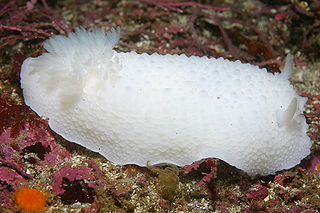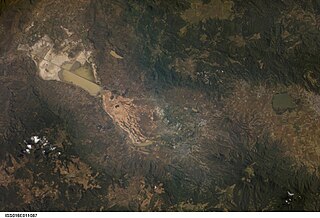
Salpiglossis sinuata, the painted tongue, scalloped tube tongue, velvet trumpet flower, palito amargo or panza de burro ( Spanish : donkey's paunch ), is a flowering plant belonging to the subfamily Cestroideae of the nightshade family Solanaceae, native to southern Chile.

Chasmosaurus is a genus of ceratopsid dinosaur from the Late Cretaceous Period in North America. Its given name means 'opening lizard', referring to the large openings (fenestrae) in its frill. With a length of 4.3–4.8 metres (14.1–15.7 ft) and a weight of 1.5–2 tonnes —or anywhere from 2,200 to nearly 5,000 lbs., give or take—Chasmosaurus was of a slightly smaller to ‘average’ size, especially when compared to larger ceratopsians.

Sir Charles Norton Edgcumbe Eliot was a British diplomat, colonial administrator and botanist. He served as Commissioner of British East Africa in 1900–1904. He was British Ambassador to Japan in 1919–1925.

Monoclonius is an extinct genus of herbivorous ceratopsian dinosaur found in the Late Cretaceous layers of the Judith River Formation in Montana, United States, and the uppermost rock layers of the Dinosaur Park Formation in Alberta, Canada dated to between 75 and 74.6 million years ago.

Janolus is a genus of small to large sea slugs, or more accurately nudibranchs, marine gastropod mollusks, in the family Janolidae. The name Janolus is derived from the two-headed god Janus, in ancient Roman mythology.

Acacia glaucoptera, commonly known as flat wattle or clay wattle, is a species of Acacia which is endemic to the south-west of Western Australia.

Elysia is a genus of sea slugs, marine gastropod molluscs in the family Plakobranchidae. These animals are colorful sea slugs, and they can superficially resemble nudibranchs, but are not very closely related to them. Instead they are sacoglossans, commonly known as sap-sucking slugs.

Eubranchidae is a taxonomic family of sea slugs, marine gastropod molluscs in the superfamily Aeolidioidea, the aeolid nudibranchs.

Naticidae, common name moon snails or necklace shells, is a family of medium to large-sized predatory sea snails, marine gastropod molluscs in the clade Littorinimorpha. The shells of the species in this family are mostly globular in shape.

Doto is a genus of sea slug, a nudibranch in the family Dotidae. This genus feeds on hydroids, as reflected by its serrated radula.

Arminidae is a family of sea slugs, marine gastropod mollusks in the superfamily Arminoidea.

Doris is a genus of sea slugs, specifically dorid nudibranchs. These animals are marine gastropod molluscs in the family Dorididae.

Euspira is a genus of medium-sized sea snails, marine gastropod molluscs in the subfamily Polinicinae of the family Naticidae, the moon snails.

Laguna de Sayula is a lake located in the southern area of Jalisco, about 60 km from Guadalajara. It is located in the municipalities of Sayula, Zacoalco de Torres, Amacueca, Teocuitatlán de Corona, Atoyac and Techaluta de Montenegro.
Notaeolidia depressa is a species of sea slug, an aeolid nudibranch, a marine gastropod mollusc in the family Notaeolidiidae.
Tochuina nigritigris is a species of dendronotid nudibranch, in the family Tritoniidae, that is 82 mm long.

Isotealia antarctica, the salmon anemone, is a species of sea anemone in the family Actiniidae. It is found in the southern Atlantic and Pacific Oceans and the waters around Antarctica. It is a filter feeder and opportunistic predator.
Tritoniella is a genus of sea slugs, specifically dendronotid nudibranchs. It is a marine gastropod mollusc in the family Tritoniidae.The genus was described in 1907 by the British diplomat and malacologist Charles Eliot.
Clavularia frankliniana is a species of colonial soft coral in the family Clavulariidae. It is found in the southern Atlantic Ocean and the waters around Antarctica. It was first described in 1902 by the French zoologist Louis Roule.
Tritoniella gnathodentata is a species of the nudibranch genus Tritoniella.














